At our clinic, our specialty is Hormone Replacement Therapy (HRT). We are proud to offer the most cutting-edge treatments available that are safe, affordable, and efficient. Our treatments include Testosterone Replacement Therapy (TRT), Human Growth Hormone (HGH) Replacement Therapy, Sermorelin Hormone Therapy, and any other treatment needed to restore any of your hormones to a more youthful level.
But we offer more than hormone replacement.
We are a holistic clinic, and we understand a basic rule of good health: without a healthy lifestyle, any type of treatment will not be nearly as effective. As a house is only as durable as its foundation, and a chain is only as strong as its weakest link, the same is true for a healthy lifestyle.
It is common knowledge that “we are what we eat,” and consuming healthy foods and minimizing junk foods is crucial to our well-being and not participating in the “Obesity Olympics.” Getting sufficient sleep, moderate exercise, and drinking more water are also recommended.
These are all excellent ideas. But the statistics in modern western societies indicate that most of us are not heeding those recommendations. Obesity 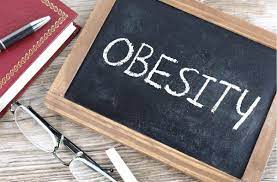 rates throughout the western world are skyrocketing.
rates throughout the western world are skyrocketing.
Worse, our stress levels have exploded in the 21st century. Our lives are filled with “to-do lists from hell,” and being busy is a metastasizing disease. With the advent of modern technology, especially social media, we are “ON” 24 hours a day, 7 days a week, month after month, and year after year.
The results of this ultra-stressed existence are not pretty. Our obesity rates have ballooned: an incredible four in ten American adults are obese, and the numbers are climbing with no slowdown in sight. Based on a study titled State of Obesity 2022: Better Policies for a Healthier America conducted by Trust for America’s Health (TFAH), a non-profit, non-partisan public health policy research and advocacy organization, nationally, 41.9% of adults are obese; Black adults are 49.9 % obese; Hispanic adults are 45.6% obese, and rural areas have higher rates of obesity than urban and suburban areas.
Obesity is measured by a Body Mass Index (BMI) of 30 or higher. BMI is a metric derived from a person’s weight divided by their weight. Obesity numbers do not factor in folks who are overweight. When that total is added to the equation, it is no surprise that western countries' heart attacks, strokes, diabetes, and cancer rates are on a tsunami-like trajectory.
Modern medicine has performed miracles; pharmaceuticals and surgeries have saved countless lives. But our lifespans are declining. According to the Center for Disease Control (CDC), life expectancy in the United States dropped a full year from 2020 to 2021. The drop from 77.0 to 76.1 lowered U.S. life expectancy to its lowest level since 1996.
Combining that with the 1.8-year drop in 2020 produced the most significant fall in life span since 1921-1923!
How is this possible?
How could our life expectancy be descending in the world while we have access to the latest medical technology and treatments that royalty in past times could only dream about? We have the science, the supplements, the fitness routines, the gadgets, and who knows what else...but we don’t have the longevity and extended quality of life it seems like we should.
The Blue Zones might have a few answers.
A Blue Zone is a geographic area where people have lower rates of debilitating diseases and longer lifespans than those who live elsewhere. The mantra of Blue Zones could be “quality AND quantity” since the rates of depression are lower as well as disease.
In these zones, a blue dot is placed on a map of every place where a centenarian (100 years old or older) lives. A circle is drawn around the region if there are many blue dots. Hence the name Blue Zone.
The Longevity Film begins with a biohacker (defined as someone using science and technology to make his or her body function better and more efficiently) from Australia named Kale beginning his day by following a rigid schedule in his quest for perfect health...
Up at 6:00 AM, drink 500 mg filtered water; 6:15 first meditation; 6:35 swallow dozens of supplements; 6:40 medicinal mushroom almond latte; 6:45 no breakfast yet, it’s cardio time, swim, bike, or run; 8:AM breakfast, ensure that it consists of protein and fat; at the desk by 9:00; lunch is a salad with a bit  of chicken breast; 5:00 PM work is over – second meditation plus breathing technique to alkalize the system; 6:PM, Yoga session to wind down the day; 7:00 PM dinner – more salad with a small piece of lamb; 8:PM check social media 20 minutes max; 8:20 PM read self-help book while brushing teeth; 9:PM make sure the WiFi is off, phone on flight mode, turn off the light and sleep, and repeat.
of chicken breast; 5:00 PM work is over – second meditation plus breathing technique to alkalize the system; 6:PM, Yoga session to wind down the day; 7:00 PM dinner – more salad with a small piece of lamb; 8:PM check social media 20 minutes max; 8:20 PM read self-help book while brushing teeth; 9:PM make sure the WiFi is off, phone on flight mode, turn off the light and sleep, and repeat.
Whew! What a load! This doesn’t count the other supplements taken throughout the day; the hours spent in the sauna; weight-lifting and other resistance training; balance work; light therapy with Gamma lights on the wall and nasal devices to put red and blue light up the nose to boost brainpower and decrease blood viscosity; air purifiers; reverse osmosis water filters; bio-mats that fill the body with negative ions, gemstone energy, and infrared light; foam rolling; donning yellow glasses in the evening to block blue light that impedes melatonin; staying up-to-date with hundreds of emails, books, and magazines concerning stem cells, nanotechnology, nootropics (smart pills and drugs), aromatherapy; genetic editing, cellular senescence, and life extension; the best way to add 5 pounds to your deadlift or trim a few minutes off your running time; slicing lemon to add to the morning green tea; adding MCT oil to the morning coffee; breaking in a new fitness gadget; trying the latest hot supplement or “super food”; dozens of pills, powders, and sprays; intermittent fasting; mind machines; DVDs for mind aerobics; stress baths of epsom salt with baking soda; blood draws; blood pressure monitoring; sleep hacks; and countless other minor things that add up to a full-time endeavor that can leave little time for relaxation.
Is all of this necessary? Is there a better way?
These are the questions that the protagonist of the movie asked himself as he chugged down his avocado smoothie while hurrying to his massage therapist. Despite his intense regimen, he needed to feel better.
While receiving his treatment, he mentioned that he was doing a detox. When asked why he was doing a detox, he answered, “Who doesn’t do a detox?” His chiropractor then told him about the cultures called Blue Zones; the people who live there live a long time, are healthy, and live way beyond those of us in western, modern cultures...without detoxing or drinking avocado smoothies!
There are five Blue Zones: Sardinia, Italy; Okinawa, Japan; Icaria, Greece; Loma Linda, in Southern California; and the Nicoya Peninsula of Costa Rica. Folks in these areas reach age 100 ten times more than in the west, with a fraction of the disease!
There are differences in the culture of Blue Zones compared to the west. In modern nations, 10 million people died from cancer last year, 18 million died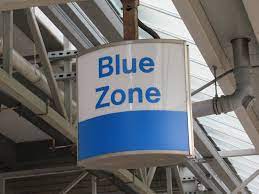 from cardiovascular disease, 400 million suffer from diabetes, and more than 300 million have depression, with suicide becoming a significant cause of death, especially in younger people.
from cardiovascular disease, 400 million suffer from diabetes, and more than 300 million have depression, with suicide becoming a significant cause of death, especially in younger people.
The issue with standard medical care in the west is if a prescription or a scalpel can’t cure an illness, our medicine has no other options. Most folks over 60 are on several prescribed drugs that reduce our risk of disease by perhaps 20-30% with several possible side effects. Compare that to healthy lifestyle changes that reduce the risk up to 70-80% with no side effects.
As we age, the number of drugs prescribed grows, and the average person in their 80s is around 12-13 prescriptions. No wonder many senior citizens become confused and either forget to take their medicines or take them twice. Contrast that with the Blue Zones, where the average person is seldom on any more than one medication, usually only for a short time. They have no idea what the side effects of prescription are.
Western culture is steeped in the notion that as we age, we spend more time in the hospital and take more prescriptions. This results in a vicious circle. If we spend time in a hospital, we spend even more time in a hospital; ditto prescription drugs. To put it bluntly, we are a culture of sickness.
The key is trying to avoid the need for hospitals or drugs, and the Blue Zones show us examples of how to do that.
Kale became curious about what he was missing and ventured to three Blue Zones. He approached this journey with a bit of trepidation; he knew he might be opening up a Pandora’s Box. Everything he has been doing to attain optimal health will be put into question by this trip. But he proceeded and did not forget to pack his unique pillow.
Okinawa
Kale’s first stop was Okinawa. In Okinawa, the average lifespan for women is 87, and for men, 81, with far less disease. They consume lots of Seafood – seaweed, fish, and a wide variety of vegetables: green leafy, and orange. Obese people in Okinawa are rare. Fewer calories = longevity. In our culture, we are overfed and undernourished.
Kale visited a Senior Center and saw the community support enjoyed by Okinawans. Social media and modern technology make aging folks in the West often isolated. An example is the iPhone. Notice it is not named the We-Phone. Modern technology cannot deliver the same brain chemicals that boost 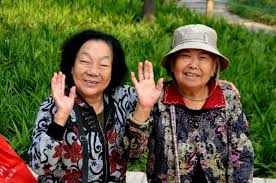 our moods and give us pleasure as can face-to-face gatherings.
our moods and give us pleasure as can face-to-face gatherings.
There is almost no isolation in Okinawa and less dementia. Here, others care for you, and you for them. A key to health and happiness is to have someone else in your life who loves you and cares for you, and you love and care for them. The best drug in the world is happiness, which has nothing to do with pills or modern medicine.
Also, there is a group exercise in which all ages participate. In the west, things are compartmentalized. Kids play with kids, seniors with seniors, etc. That is not the case here; all age groups have something of value to share with other ages. In Japan, there is a saying that the ideal distance between young and old is for young people to carry a bowl of soup to the older generation without it becoming cold.
Kale stated that food in Okinawa was challenging. He broke many of his rules. He ate extra carbs from his usual keto diet and had to adapt. But he felt good, healthy, and relaxed.
His takeaways from his Okinawa experience are:
Make good friends, young and old
Food can up-regulate your longevity genes, so eat more seaweed
Social media does not equal the benefits of a live community.
Loma Linda
Loma Linda was Kale’s next stop on this quest for Blue Zone secrets. California is healthier in some ways, but the mortality rate in the Golden State is the same as anywhere else in the west. In 2020 men in California lived an average of 79; Women 82. In Loma Linda, men, on average, made it to 89, and women, 91, enjoy a vibrant, healthy life.
The fascinating thing is that this area is the opposite of a Blue Zone; it is smack-dab in the middle of a red zone where Del Taco and Wiener Hut fast-food outlets thrive. What explains the longevity of Loma Linda residents? Perhaps their religion.
Loma Linda is home to a large community of Seventh-Day Adventists. They believe in observing the Sabbath as a day of rest when they relax, release the week's worries, don’t watch television, and spend time with God. Smoking and alcohol are taboo. The rate of heart disease in Loma Linda is 66% lower than the average for California men, and for women, it is an unbelievable 98% lower than average California women! For stroke, it is 72% lower for 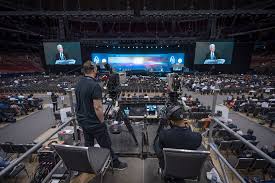 men and 82% lower for women than other Californians.
men and 82% lower for women than other Californians.
This is a strong community that evangelizes health. Because of their faith and how they come together, they support each other. They engage in healthy pursuits like outdoor activities and try to focus on balance and wellness.
Researchers believe that genes are not static. What we eat, think, have good or bad relationships, who we socialize with, how we exercise and sleep, the little decisions we make daily, and the toxins in our environment determine epigenetics (how our genes express themselves). The health determination equation could be 25% genes and 75% environmental. There can be bad vegetarians and good meat eaters.
These community members strive to live a good life. At mealtime, they enjoy happy talk and warm gatherings with calm happiness going on.
Seventh-Day Adventists experience less stress since their belief system inspires behavior. Religion makes it simple: you know where you belong. They believe that science is nihilistic and has become a surrogate religion. Worship honors the chain of being.
They also mention that this feeling of contentment is not exclusive to their religion. You could be any religion; the key is the sense of community, and the belief in a higher power are the most critical components.
Another critical component for controlling stress is some type of slowing down. Prayer and/or meditation allow us to slow down and connect at the moment. Heart attacks occur at the highest rate at 8 AM Monday morning since blood pressure is higher and the blood is thicker. Conversely, the fewest heart attacks occur at 10 AM Sunday mornings.
Kale’s takeaways from Loma Linda are:
- Find a reason to come together. Church, surfing, Yoga...do more regularly.
- Be of service to others, and find a higher purpose.
- Connect to the moment. Don’t meditate more; live meditatively.
Icaria
Kale’s next stop was Icaria: The island where people forget to die. The average age of death for men and women is 90!
They wake up with the sun rising. They mostly grow their own food and have a sense of purpose. Icarians are not materialistic. A newer car, a bigger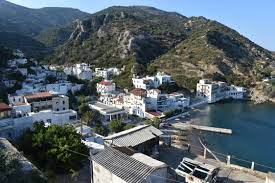 house, and making more money are not their focus. They enjoy life and live in the moment.
house, and making more money are not their focus. They enjoy life and live in the moment.
They are not vegans, but they eat a lot of fresh vegetables. Their diets are about 80-20 seasonal plant-based, with olive oil and moderate wine drinking. Meat is okay in a meat-based diet, but they do not overeat.
At their social gatherings and parties, they drink alcohol, but no one gets drunk. They enjoy life at a slow pace. As with the other Blue Zones, depression, disease, and heart attacks in Icaria are all low.
Kale’s takeaways from Icaria:
- Find desirable outcomes that require slowing down.
- Eat homegrown food, a little meat, and lots of vegetables
- Enjoy a drink but don’t get drunk.
- Move more and often, but less intensely.
- Act young; no excuses.
- Have more fun with others.
Can we simulate Blue Zones in urban society? No, but we can live closer to how they live. Here is a summary of what Kale discovered in the Blue Zone cultures:
- We need to lose that intrinsic sense of urgency and cultivate some form of slowing down. We need to change our way of dealing with work, jobs, and commitments that we can’t get out of. Instead of I should do it NOW, we need to lose that sense of stress. This is a challenge, but it is growth and evolution.
- Hurry sickness – if you blow through red lights to get to your meditation class on time, you’re defeating the purpose and doing things incorrectly. Look to re-proportion what we do to make it healthy again. We don’t have to do everything – just do something. Take one step and work the rest out.
- Strive to get nutrition right most of the time. Eat a seasonal, local, organic diet. Grow your own if possible. Move daily. Exercise, but not in the typical sense. Build movement into your life, so you do it as much as possible throughout each day. Develop a humble, purposeful, and contented attitude toward life. Have a genuine sense of humor, enjoy play, and find meaning and presence in daily experiences, not just the special ones. Try to surround yourself with a great community of supportive people who support you, and you support them.
- It’s not just one thing we do. A key takeaway from the Blue Zones is don’t be fanatical. Fanaticism may actually shorten your life. All Blue Zone’s enjoy lots of community engagement, and their lives are purposeful. And they move. Movement is life since it moves blood and lymphatic fluid. Exercise boosts metabolism and improves balance, agility, and coordination. These attributes are crucial for aging well since the number one cause of injury and death for people over 65 is a hip fracture caused by falling.
- Fitness does not have to be overdone. The 1970s action heroes look chubby compared to today’s insane standards of chiseled abs, so don’t stress over developing a perfect body. As little as 3 to 5 hours of exercise a week can lower the risk of heart attack, stroke, cancer, Alzheimer’s Disease, diabetes, and depression by 30% and osteoporosis by 50%. Movement can also lower blood pressure and improve sleep. No pill can accomplish that!
- The good news? Exercise and movement do not have to be intense and time-consuming. There is no need to push your body into a high-intensity interval training routine or pump iron for hours. A typical exercise routine in the Blue Zones is moving incidentally and naturally and is not considered
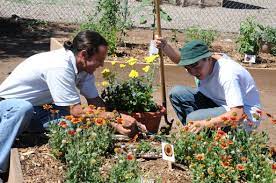 exercise. Things like waking up when the sun rises and taking a leisurely stroll to the town square to get the morning coffee or walking up the hill to do a bit of gardening. They spend time in nature where nothing is uniform and constantly adapt to a changing environment while breathing fresh air. This keeps folks in the Blue Zones in shape in ways that a gym cannot.
exercise. Things like waking up when the sun rises and taking a leisurely stroll to the town square to get the morning coffee or walking up the hill to do a bit of gardening. They spend time in nature where nothing is uniform and constantly adapt to a changing environment while breathing fresh air. This keeps folks in the Blue Zones in shape in ways that a gym cannot. - These changes are attainable for everyone, even those who do not live in a longevity culture. Just look around and realize that everything you need to enjoy a long life is right where you are. The people you love and hang around with, your friends and family, your community, your purpose, and the things that make you feel fantastic will help you live a long time.
- Finally, and perhaps most importantly, don’t let yourself age mentally. To be young, act young, and then you’ll stay young!
Hormone restoration and a Blue Zone lifestyle = a winning synergy!
The word synergy is defined as “The interaction of two or more agents or forces so that their combined effect is greater than the sum of their individual efforts.”
You have read what similar lifestyle traits long-living Blue Zone residents have in common. Now consider the effect when testosterone and growth hormone therapies restore your hormones to a more youthful level. 1 + 1 = 3, or even 5! Synergy defined!
After returning to Australia, Kale had no plans to stop his biohacking regimen. But, in true Blue Zone spirit, he was determined to make gradual changes, one at a time. Slowing down was his first objective.
Hormone replacement and lifestyle modifications can each deliver health benefits in their own right. But the tag-team combination of these changes can take your health and anti-aging efforts to the next level.
By applying this combination, you will feel better immediately, and by slowing down, you will be less stressed and enjoy the present while building a solid health foundation that will pay dividends in the future.
Contact us for a FREE, no-obligation discussion concerning the incredible benefits of Hormone Replacement Therapy (HRT)!
- What Is Andropause And How Can I Prepare For It? [Last Updated On: November 23rd, 2023] [Originally Added On: February 20th, 2021]
- Theories On Aging [Last Updated On: November 23rd, 2023] [Originally Added On: February 21st, 2021]
- Sleep And Hgh Go Hand In Hand [Last Updated On: November 23rd, 2023] [Originally Added On: February 22nd, 2021]
- L-carnitine Has The Ability To Preserve Mental Sharpness In The Elderly [Last Updated On: November 23rd, 2023] [Originally Added On: February 23rd, 2021]
- Knowing Two Languages Can Postpone Dementia [Last Updated On: November 22nd, 2023] [Originally Added On: February 24th, 2021]
- What Are The Functions Of Human Growth Hormone? [Last Updated On: November 21st, 2023] [Originally Added On: February 25th, 2021]
- Hgh Sleep: Keep Young And Healthy With Deep Sleep [Last Updated On: November 20th, 2023] [Originally Added On: February 26th, 2021]
- Why Does Human Growth Hormone Production Drop As We Age? [Last Updated On: November 19th, 2023] [Originally Added On: February 27th, 2021]
- Growing Life Spans And Life Expectancy [Last Updated On: November 18th, 2023] [Originally Added On: February 28th, 2021]
- Flax Seed Oil: Longevity And Anti-aging Medicine [Last Updated On: November 17th, 2023] [Originally Added On: March 1st, 2021]
- Exercise To Increase Your Hgh Production! [Last Updated On: January 23rd, 2023] [Originally Added On: March 2nd, 2021]
- Eighteen Suggestions For A Longer And Happier Life [Last Updated On: November 16th, 2023] [Originally Added On: March 3rd, 2021]
- Chemical Pollution Is Destroying Masculinity [Last Updated On: January 23rd, 2023] [Originally Added On: March 4th, 2021]
- Bio-identical Hgh Hormone Replacement Therapy [Last Updated On: November 15th, 2023] [Originally Added On: March 5th, 2021]
- Blue Zone Cultures and Their Connection to Longevity [Last Updated On: January 25th, 2023] [Originally Added On: October 27th, 2022]
Word Count: 3285







